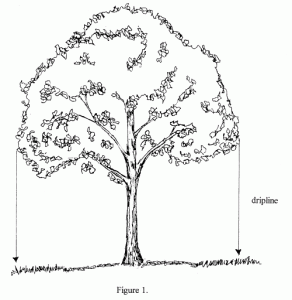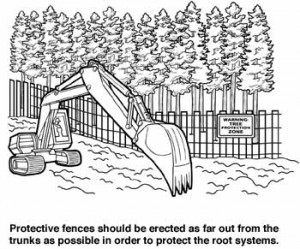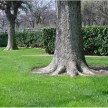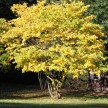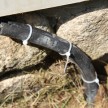How To Protect Trees During Construction
Pre-Construction Tree Protection Plan: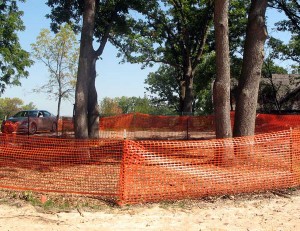
Protect Trees:
Construction Damages Trees:
Many people do not realize that construction, excavation and heavy machinery wreak havoc on the root systems of trees which can either stunt growth or kill a tree.
The damage that occurs during construction may not at first be obvious unless the tree’s trunk was damaged. In most cases the tree appears healthy but produces little new growth.
Damage Takes Years to Show:
Stress symptoms caused by tree root damage may take 5 to 10 years to fully develop. The tree initially lives off of its stored reserves — after the tree reserves are depleted and the tree is exposed to hot, dry weather the tree declines rapidly and eventually may die.
Often insects and disease will invade the weakened tree and accelerate this process.
Most active tree roots are in the top 3 feet of soil; the majority is in the top 12 inches. Roots normally grow outward to about three times the branch spread.
Only 50 percent of the trees root system occurs between the trunk and the drip line. The drip edge is the outer most vertical plane of the trees leaves.
Avoid The Tree Drip Edge Areas:
When thinking about how to protect trees during construction think about and focus on the trees drip edge. [see drawing]
If possible, heavy machine operation should be avoided under a tree canopies drip edge. [see photo]
Digging trenches for installation of water, sewer, telephone, cable, gas lines, or for building foundations can damage the root system of nearby trees. The percentage of the total root system affected, the overall health of the tree, time of year, and the type and age of the tree will influence the survival and recovery rate of the tree.
To minimize potential damage, attempt to locate trenching in areas that will cause the fewest roots to be damaged or near areas that have already been trenched. If possible, designate one general area for trenching.
Taking proper precautions to your landscape treasures during a construction project or renovation can and will pay dividends.
How To Protect Trees During Construction:
1. Surround the trees with snow fencing. The snow fencing, if possible, should extend in a circle around the trees drip edge. This area should be “off limits”.
2. Placing a barrier around the trunk of the tree does not protect most of the tree’s root system. But maybe necessary if machinery has to maneuver close to the tree. Install wood 2×4 slats to protect the bark from being cut.
3. Avoid storing piles of dirt or materials under the tree
4. After construction moderate application of fertilizer may be beneficial. Use 2 pounds of 5-10-5 per inch of trunk diameter measured three feet above the ground.
5. Damage from filling – The base of a tree at the soil line should flare out (be wider than the tree trunk a foot above the soil line). If the tree does not have a flare, but enters the ground in a straight line, fill dirt has been added
6. Changes in soil grade – Even a few inches of fill or soil removal can cause extensive root damage. If possible, never remove soil from or add large amounts of soil within the drip line.
7. If a tree well is to be constructed, built a wall no closer than the drip line and grade the soil outside of the tree well so it drains away from the tree.
8. Locate trenching in areas that will cause the fewest roots to be damaged.
By following these guidelines on how to protect trees during construction you will put yourself in a position of protecting and saving mature and valuable trees and landscaping.




